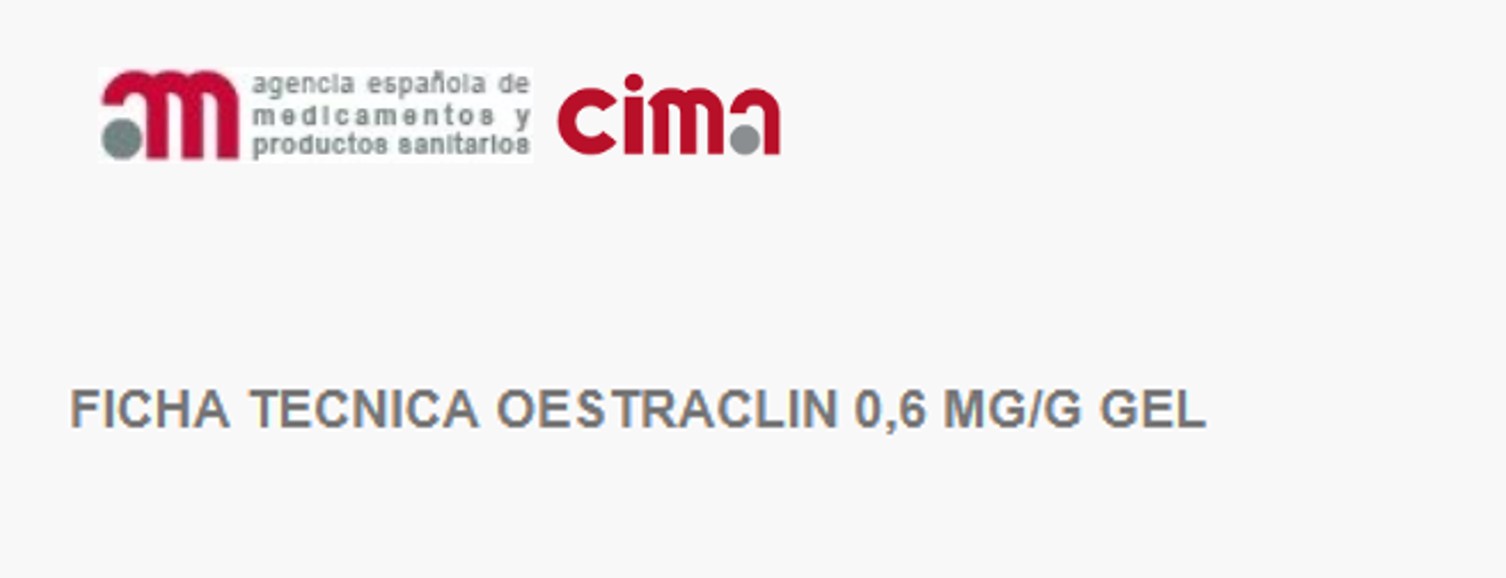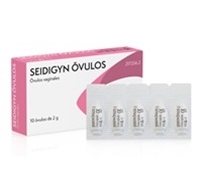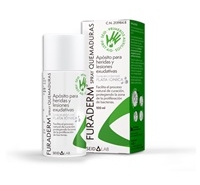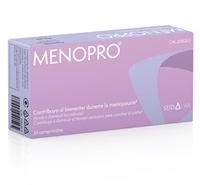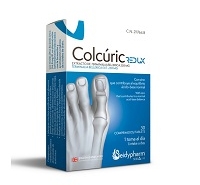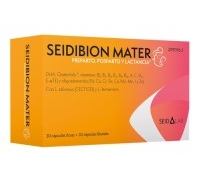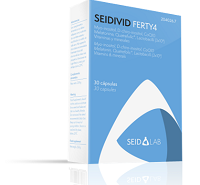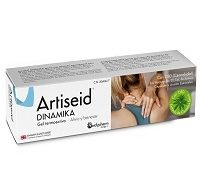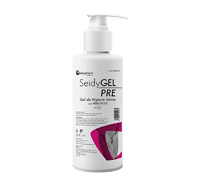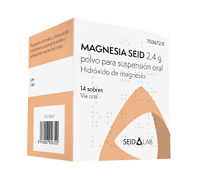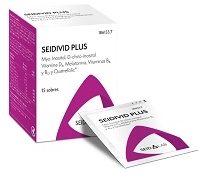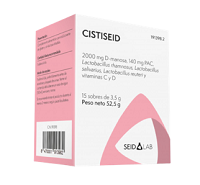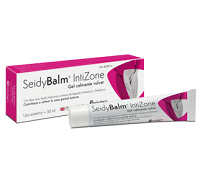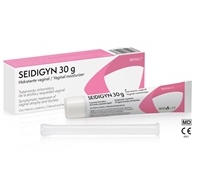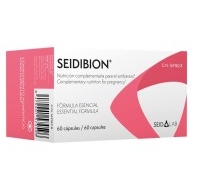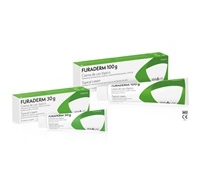4.1 Therapeutic indications
This medicinal product is indicated in adult women for the treatment of (see section 4.4):
-
-
-
-
-
- Signs and symptoms of oestrogen deficiency due to natural or surgically-induced menopause, such as: hot flushes, sleep disorders and urogenital atrophy, mood swings, asthenia and loss of bone substance.
Prevention of osteoporosis in post-menopausal women at high risk of future fractures who do not tolerate or have contraindications for other authorised alternatives for the prevention of osteoporosis.
There is limited experience in women over 65 years of age.
4.2 Posology and method of administration
-
-
-
-
- Hormone replacement therapy (HRT) should only be continued for as long as the benefits outweigh the risks for the patient.
- For the treatment of climacteric symptoms, the lowest effective dose should be used for the shortest possible treatment time in all cases.
Posology
The daily dose is variable (adjusted on an individual basis), so patients should follow the doctor’s prescription.
The average dose is 2.5 g gel/day, i.e., one spatula measure per day for 21 to 31 days each month.
Dosing may be cyclical when oestrogen is given cyclically with a break, normally for 21 days on and 7 days off. Progestogen is normally added for 12 to 14 days of the cycle.
Dosing may be continuous sequential when oestrogen is given continuously. Progestogen is normally added sequentially for at least 12-14 days of the 28-day cycle.
Dosing may be continuous combined when oestrogen and progestogen are administered daily without a break.
The dose will eventually be readjusted during the course of the second or third cycle, taking into account the following clinical signs:
Excessive effect:
-
-
-
-
-
- Breast tenderness
- Abdominal distension
- Anxiety, agitation, aggression
In these cases, the dose should be reduced. Apply only half the dose of gel that is indicated on the applicator spatula.
Insufficient effect:
-
-
-
-
-
- Persistent hot flushes
- Vaginal dryness
- Headaches and sleep disorders
- Asthenia
- Depressive tendency
In these cases, the dose should be increased. Apply the amount of gel corresponding to one and a half or two doses on the applicator spatula per day.
It is particularly recommendable to add an oral progestogen or micronised progesterone during the last 12 to 14 days of use of Oestraclin® 0.6 mg/g.
The addition of a progestogen is not recommended in hysterectomised women, unless there is a previous diagnosis of endometriosis.
The protective effect of progestogens on endometrial cancer has not been studied at oestrogen doses above 1.25 mg daily (a standard dose of Oestraclin® 0.6 mg/g corresponds to 2.5 g of gel, the quantity that contains 1.5 mg of oestradiol, of which 10% of the quantity applied is absorbed, i.e., 150 pg of oestradiol).
Method of administration
Spread the gel over an extensive area of skin.
Areas for correct application:
-
-
-
-
-
-
- Neck
- Shoulders and inner arm
- Abdomen
- Inner thigh
Areas where it should not be applied:
-
-
-
-
-
-
- Breasts (risk of swelling and pain)
- Vulvo-vaginal mucosa (irritation and itching)
The gel should preferably be applied by the patient herself after washing, either in the morning or in the evening. It does not need to be rubbed or massaged in.
Allow to dry before getting dressed (1 or 2 minutes).
Oestraclin® 0.6 mg/g is odourless and does not stain. The solvent is a 45° water/alcohol mixture.
It should not be applied directly to mucous membranes.
A withdrawal bleed may occur with each break in the treatment.
4.3 Contraindications
-
-
-
-
- Hypersensitivity to the active substance or to any of the excipients listed in section 6.1.
- Breast cancer, personal history or suspected breast cancer;
- Diagnosed or suspected malignant oestrogen-dependent tumours (e.g., endometrial cancer);
- Undiagnosed vaginal bleeding;
- Untreated endometrial hyperplasia;
- Idiopathic venous thromboembolism (VTE) or history of VTE (deep vein thrombosis, pulmonary embolism);
- Known thrombophilic disorder;
- Active or recent arterial thromboembolic disease (e.g., angina, myocardial infarction);
- Acute liver disease or history of liver disease while liver function
tests remain abnormal,
- Porphyria.
4.4. Special warnings and precautions for use
For the treatment of climacteric symptoms, HRT should only be initiated when the symptoms negatively affect the woman’s quality of life. In all cases, a careful assessment of the risks and benefits should be carried out at least once a year and HRT should only be continued for as long as the benefits outweigh the risks.
A full personal and family history should be taken before initiating or resuming hormone replacement therapy (HRT). The physical examination (including breasts and pelvis) should take into account the medical history and the contraindications and warnings for using HRT.
Regular medical examinations are recommended during treatment, the nature and frequency of which will depend on each woman’s situation. Women should be informed about any changes in their breasts that they need to report to their doctor or nurse. Screening, including mammography, should be carried out periodically according to the accepted clinical practice guidelines, adapting them to the clinical needs of each case.
Administration of the lowest dose and shortest duration of treatment should always be considered.
Hysterectomised women requiring post-menopausal hormone therapy should receive replacement therapy with oestrogens alone, unless there is a diagnosis of endometriosis.
Since clinical experience with percutaneous oestradiol is still limited, caution should be exercised in the following conditions:
-
-
-
-
-
- Cardiovascular conditions: valve disease, rhythm disorders, thrombogenesis
- Cerebrovascular disorders
- Ocular conditions of vascular origin
The conditions listed below may recur or become worse during treatment with this medicinal product:
-
-
-
-
- If any of these situations occur or have occurred previously and/or have become worse during pregnancy or during previous hormone therapy, the patient should be closely monitored.
- Leiomyomas (uterine fibroids) or endometriosis
- History or risk factors for thromboembolic disorders (see below)
- Risk factors for oestrogen-dependent tumours, e.g., breast cancer in first-degree relatives
- Hypertension
- Hepatic disorders (e.g., hepatic adenoma)
- Renal disorders
- Diabetes mellitus, with or without vascular involvement
- Cholelithiasis
- Migraine or headache (severe)
- Systemic lupus erythematosus (SLE)
- History of endometrial hyperplasia (see below)
- Epilepsy
- Asthma
- Otosclerosis
- Pruritus
If a worsening of any of the aforementioned conditions is diagnosed or suspected during treatment with HRT, the benefits and risks of HRT should be reassessed and the advisability of continuing treatment should be based on this.
Treatment should be discontinued immediately if any of the following situations occur: jaundice or impaired liver function, significant increase in blood pressure, migraine-type headache and pregnancy, or if any of the conditions described in section 4.3 occur.
Endometrial cancer
The risk of endometrial hyperplasia and endometrial cancer is increased in women who receive oestrogens alone for long periods. Adding a progestogen for at least 12 days per cycle in non-hysterectomised women significantly reduces this risk (see section 4.8).
Breakthrough bleeding and spotting typically occur during the first few months of treatment. If this bleeding occurs some time after starting treatment or persists once treatment is discontinued, the aetiology of the bleeding should be investigated, including an endometrial biopsy to rule out endometrial malignancy.
Oestrogenic stimulation can lead to a pre-malignant or malignant transformation of a residual endometriotic lesion. Therefore, in women who have undergone a hysterectomy due to endometriosis, a progestogen should be added, especially if residual endometriosis is known to be present.
Breast cancer
The “Women’s Health Initiative” (WHI) controlled clinical trial, the Million Women Study (MWS) and other epidemiological studies have revealed an increased risk of breast cancer in women taking oestrogens, oestrogens combined with progestogens or
tibolone as HRT for several years (see section 4.8). For all HRT products, the increased risk becomes apparent in the first few years of use and increases with the duration of treatment, returning to baseline values over approximately five
years after stopping treatment.
In the MWS, the risk of breast cancer with conjugated equine oestrogens or oestradiol was highest when combined with a progestogen, either continuously or sequentially, regardless of the type of progestogen. The data did not indicate a different risk for different
routes of administration.
In the WHI study, continuous administration of conjugated equine oestrogens and medroxyprogesterone acetate was associated with slightly larger breast tumours and also with a greater frequency of lymph node metastases compared with placebo.
HRT, especially combined oestrogen + progestogen, increases the density of mammography images, which may make breast cancer more difficult to detect.
Venous thromboembolism
HRT is associated with a greater risk of developing venous thromboembolism (VTE), i.e., deep vein thrombosis or pulmonary embolism. A randomised controlled trial and epidemiological studies have found a 2- to 3-fold increased risk in treated patients compared to
untreated patients. For untreated women, the number of VTE cases that occur over a 5-year period is estimated to be about 3 in every 1000 women aged 50-59 years and 8 in every 1000 women aged 60-69 years. In healthy women using HRT for 5 years, the additional number of VTE cases in a 5-year period is estimated to be 2-6 (best estimate = 4) in every 1000 women aged 50-59 years and 5-15 (best estimate = 9) in every 1000 women aged 60-69 years. The occurrence of VTE is most likely during the first year of
treatment with HRT (see section 4.8).
The risk/benefit balance of HRT should be carefully assessed in consultation with the patient in the presence of a risk factor for VTE that is not a contraindication.
The risk factors for VTE include personal or family history, severe obesity (body mass index > 30 kg/m2) and systemic lupus erythematosus (SLE). There is no consensus regarding the possible role of varicose veins in the development of VTE.
Patients with a history of VTE or known thrombophilic states are at greater risk of VTE and HRT may increase this risk. Any personal or family history of recurrent thromboembolism or miscarriage should be investigated in order to rule out a possible thrombophilic predisposition. The use of HRT should be considered contraindicated in these patients until a full assessment of thrombophilic factors has been performed or anticoagulant therapy has been initiated. Women who are already being treated with anticoagulants require careful assessment of the benefits and risks of HRT before starting treatment.
The risk of VTE may be temporarily increased by prolonged immobilisation and after significant trauma or major surgery. Following surgery, as with all patients during the postoperative period, special attention should be paid to prophylactic measures to prevent VTE. It is advisable to stop treatment temporarily for 4 to 6 weeks before surgical interventions after which prolonged immobilisation is anticipated, such as elective surgery, particularly abdominal surgery and orthopaedic surgery of the lower limbs. Treatment should not be resumed until the woman has regained full mobility.
Treatment should be discontinued if VTE occurs. Women should be advised to contact their doctor immediately if they observe any symptom suggestive of a thromboembolic episode (e.g., painful swelling of a leg, sudden chest pain, dyspnoea).
Cardiovascular disease
HRT should not be used to prevent cardiovascular disease.
Data from randomised controlled clinical trials do not show any cardiovascular benefit with continuous combined treatment with conjugated oestrogens and medroxyprogesterone acetate (MPA). Two large-scale clinical trials (WHI and HERS [Heart and Estrogen / progestin Replacement Study]) have shown a possible increase in the risk of cardiovascular morbidity in the first year of use and no overall benefit.
A large randomised clinical trial (WHI) found, as a secondary outcome, an increased risk of cerebrovascular accident (stroke) in healthy women during continuous combined treatment with conjugated oestrogens and MPA. In women not using HRT, the number of cases of stroke that occur over a 5-year period is
estimated to be about 3 in every 1000 women aged 50-59 years and 11 in every 1000 women aged 60-69 years. For women using conjugated oestrogens and MPA for 5 years, the number of additional cases is estimated to be 0 to 3 (best estimate = 1) in every 1000 women aged 50-59 years and 1 to 9 (best estimate = 4) in every 1000 women aged 60-69 years.
For other HRT products, there are as yet no randomised controlled trials assessing the risk of cardiovascular morbidity or mortality or stroke associated with HRT. Therefore, there are no data supporting the conclusion that the frequency of cardiovascular events or stroke may be different with this medicinal product.
Ovarian cancer
Long-term treatment with HRT (at least 5 to 10 years) with oestrogen-only products in hysterectomised women has been associated with an increase in the risk of ovarian cancer in some epidemiological studies. It is not clear whether long-term use of combined HRT poses a different risk to oestrogen-only products.
Other conditions
Patients with renal or cardiac dysfunction should be closely monitored, since oestrogens can cause fluid retention. Patients with end-stage renal failure should also be closely monitored because the plasma progesterone level is
likely to increase.
Women with pre-existing hypertriglyceridaemia should be closely monitored during oestrogen or hormone replacement therapy, since there have been rare cases of significant elevations in plasma triglycerides resulting in pancreatitis with oral oestrogen therapy in patients with this condition.
Although the data collected to date suggest that oestrogens do not alter carbohydrate metabolism, diabetic women should be monitored after starting treatment until more information is available.
HRT should not be used to improve cognitive function or prevent cognitive impairment, as its efficacy in this indication has not been demonstrated.
There are data from the WHI trial that show an increased risk of probable dementia in women who start continuous combined
treatment with conjugated equine oestrogen and medroxyprogesterone acetate over the age of 65. It is not known whether these findings apply to younger post-menopausal women or to other products used as HRT.
Oestrogens increase thyroxine-binding globulin (TBG), resulting in increased levels of circulating thyroid hormone, as shown by PBI (protein-bound iodine), T4 levels (determined by column or radioimmunoassay) or T3
levels (determined by radioimmunoassay). T3 reuptake is decreased, which shows an increase in TBG. Free T3 and T4 concentrations remain unchanged. Serum concentrations of other binding proteins may also be altered, including corticosteroid-binding globulin (CBG), sex hormone-binding globulin (SHBG), leading to elevated serum corticosteroid and steroid levels, respectively.
Free or biologically active hormone concentrations remain unchanged. Other plasma proteins, such as renin substrate/angiotensinogen, alpha-1 antitrypsin or ceruloplasmin, may also be increased.
Women should be informed that Oestraclin® 0.6 mg/g is not a contraceptive; neither will it restore fertility.
In women with an intact uterus, administration of oestrogens should always be accompanied by sequential administration of a progestogen.
4.5. Interaction with other medicinal products and other forms of interaction
Oestrogen and progestogen metabolism may be increased by concomitant use of substances that are known to induce drug-metabolising enzymes, specifically cytochrome P450 enzymes, such as anticonvulsants (e.g., phenobarbital, phenytoin or carbamazepine), meprobamate, phenylbutazone and anti-infective agents (e.g., rifampicin, rifabutin, nevirapine or efavirenz).
Care should be taken if the woman is taking protease inhibitors (e.g., ritonavir and nelfinavir), which are potent inhibitors of cytochrome P450 enzymes, but which also show inducing properties when used concomitantly with
steroid hormones.
Herbal medicines containing St John’s wort (Hypericum perforatum) can also induce oestrogen and progestogen metabolism.
Clinically, an increase in oestrogen and progestogen metabolism may lead to a reduction in their effects and changes in the pattern of uterine bleeding.
Transdermal administration of HRT avoids the hepatic first-pass effect and, therefore, transdermal application of oestrogens may be less affected by enzyme-inducing medicines than oral administration of hormones.
4.6. Fertility, pregnancy and lactation
Pregnancy
Oestraclin® 0.6 mg/g should not be used during pregnancy. If pregnancy occurs during treatment with this medicinal product, it should be discontinued immediately. The results of most epidemiological studies carried out to date that reported inadvertent foetal exposure to oestrogens did not show any teratogenic or foetotoxic effects.
Breast-feeding
Oestraclin® 0.6 mg/g is not indicated during breast-feeding.
4.7 Effects on ability to drive and use machines
This medicinal product has no influence on the ability to drive and use machines.
4.8. Undesirable effects
There are no adverse reactions that occur with a frequency of 10% or more.
The other adverse reactions reported in patients treated with Oestraclin® 0.6 mg/g or with any other non-oral form of administration of oestradiol are shown in the table available at: Vademecum
For more information, see sections 4.3 and 4.4.
*Breast cancer
Based on data from a large number of epidemiological studies and one randomised placebo-controlled clinical trial, the Women’s Health Initiative (WHI), the overall risk of breast cancer increases with the duration of treatment in
current or recent users of HRT.
For oestrogen-only products, the relative risk (RR) based on the reanalysis of data from 51 epidemiological studies (in which more than 80% of HRT use was with oestrogen-only products) was estimated to be 1.35 (95% CI: 1.21-1.49), which is a similar estimate to that obtained in the epidemiological Million Women Study (MWS): 1.30 (95% CI: 1.21-1.40).
For products containing oestrogen and progestogen in combination, the data from several epidemiological studies indicate a higher overall risk of breast cancer than that observed for oestrogen-only products.
Data from the MWS indicate that, compared to women who have never used HRT, the combined use of oestrogen + progestogen is associated with a higher risk of breast cancer (RR=2.00, 95% CI: 1.88-2.12) than the use of oestrogen alone (RR=1.30, 95% CI: 1.21-1.40) or tibolone (RR=1.45, 95% CI: 1.25-1.68).
Data from the WHI trial show a breast cancer risk of 1.24 (95% CI: 1.01-1.54) after 5/6 years of combined oestrogen-progestogen HRT (conjugated equine oestrogens and medroxyprogesterone acetate)
compared with the group of women who received placebo.
The absolute risk, calculated from the MWS and WHI data, is presented below:
The MWS has estimated the following figures from the known average incidence of breast cancer in developed countries:
-
-
-
-
-
- For women not using HRT, approximately 32 in every 1000 are expected to be diagnosed with breast cancer between 50 and 64 years of age.
For every 1000 current or recent users of HRT, the number of additional cases during this period would be as follows:
-
-
-
-
-
-
- For users of oestrogen-only HRT products:
- Between 0 and 3 (best estimate 1.5) after 5 years of use.
- Between 3 and 7 (best estimate 5) after 10 years of use.
- For users of combined oestrogen-progestogen HRT products:
- Between 5 and 7 (best estimate 6) after 5 years of use.
- Between 18 and 20 (best estimate 19) after 10 years of use.
The WHI trial estimated that after 5/6 years of follow-up of women between 50 and 79 years of age exposed to combined oestrogen-progestogen HRT (conjugated equine oestrogen + medroxyprogesterone acetate), 8 additional cases of invasive breast cancer per 10,000 woman-years would be due to treatment.
The following estimates have been put forward based on the trial data: For every 1000 women treated with placebo, approximately 16 cases of invasive breast cancer would be diagnosed in 5 years.
-
-
-
-
-
-
-
- For every 1000 women using combined oestrogen-progestogen HRT (conjugated equine oestrogens +
medroxyprogesterone acetate), the number of additional cases would be between 0 and 9 (best estimate 4) after 5 years of use.
- The number of additional cases of breast cancer in women using HRT is similar for all women who start HRT treatment, regardless of their age at the start of treatment (between 45 and 65 years of age) (see section 4.4).
Endometrial cancer
In women with an intact uterus, the risk of endometrial hyperplasia and endometrial cancer increases with the duration of treatment with oestrogens alone. Based on the results of epidemiological studies, the best estimate of the risk for women not using HRT is that approximately 5 in every 1000 women between 50 and 65 years of age will be diagnosed with endometrial cancer. Depending on the duration of treatment and the dose of oestrogens, the increased risk of endometrial cancer in
users of oestrogen-only therapy is 2 to 12 times higher compared to non-users. When a progestogen is added to oestrogen-only HRT, this increased risk is reduced significantly.
Other adverse reactions have been reported with oestrogen-only or combined oestrogen-progestogen therapy:
-
-
-
-
-
-
-
- benign or malignant oestrogen-dependent neoplasms, e.g., endometrial cancer
- venous thromboembolism, e.g., deep vein thrombosis in the legs or pelvis and pulmonary embolism, exacerbation of varicose veins, hypertension (see sections 4.3
Contraindications and 4.4 Special warnings and precautions for use)
-
-
-
-
-
-
-
- myocardial infarction
- cerebrovascular accident
- skin and subcutaneous tissue disorders: chloasma, erythema multiforme, erythema nodosum, vascular purpura, contact dermatitis, pigmentation disorders, generalised pruritus and exanthema
- gallbladder disorder
- Probable dementia (see section 4.4.)
4.9 Overdose
In case of overdose, the following effects are observed (see section 4.2):
-
-
-
- Breast tenderness
- Abdominal bloating
- Anxiety. Agitation. Aggression


